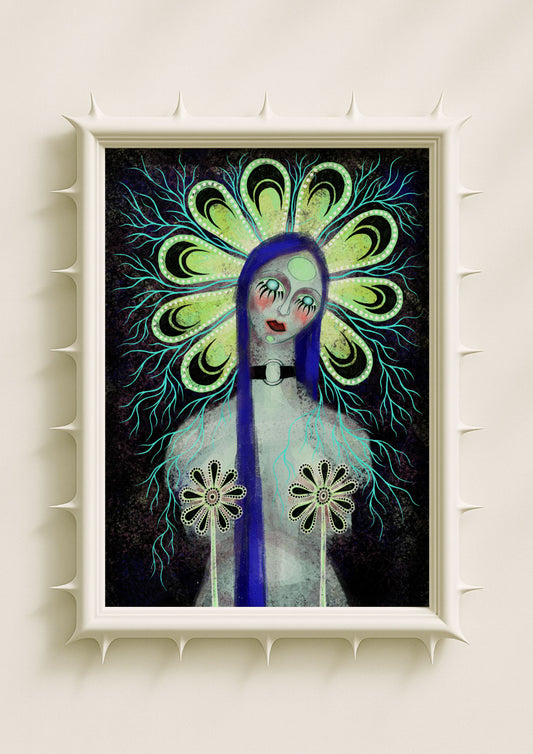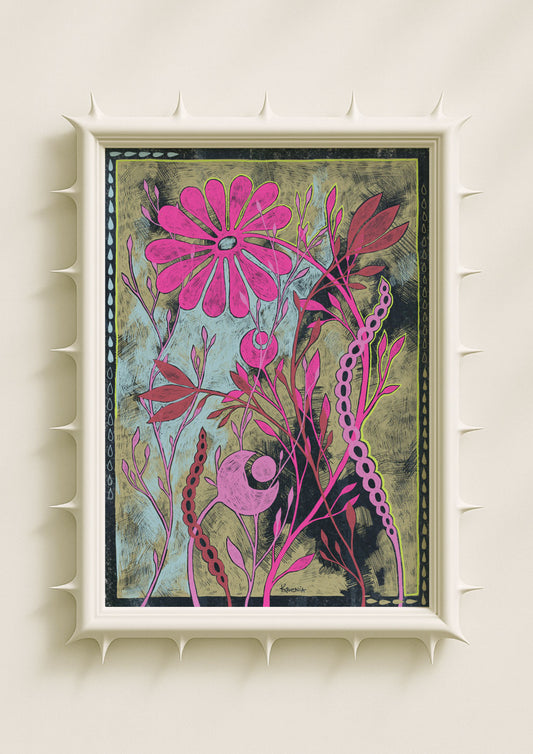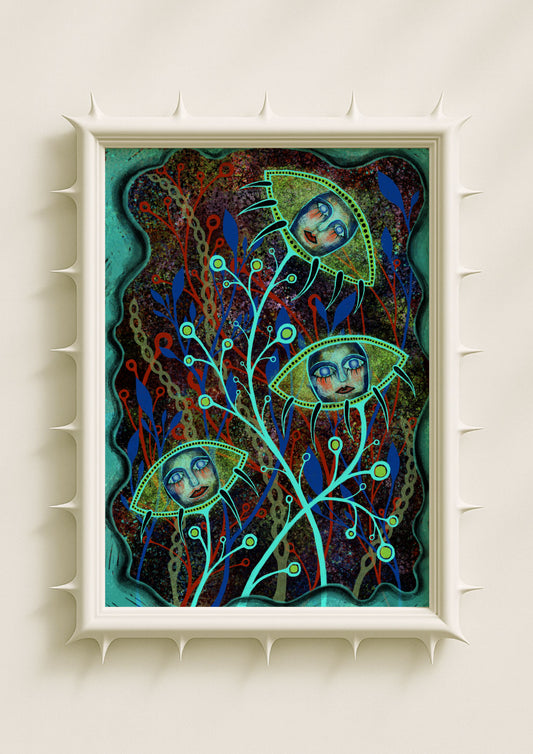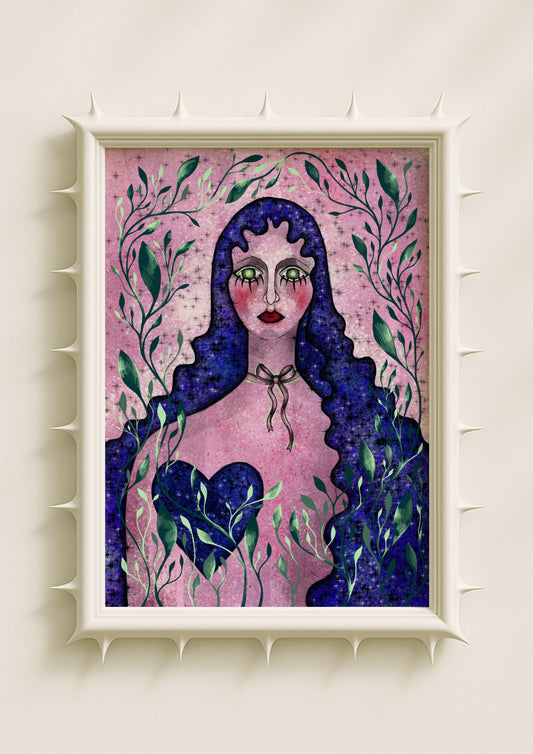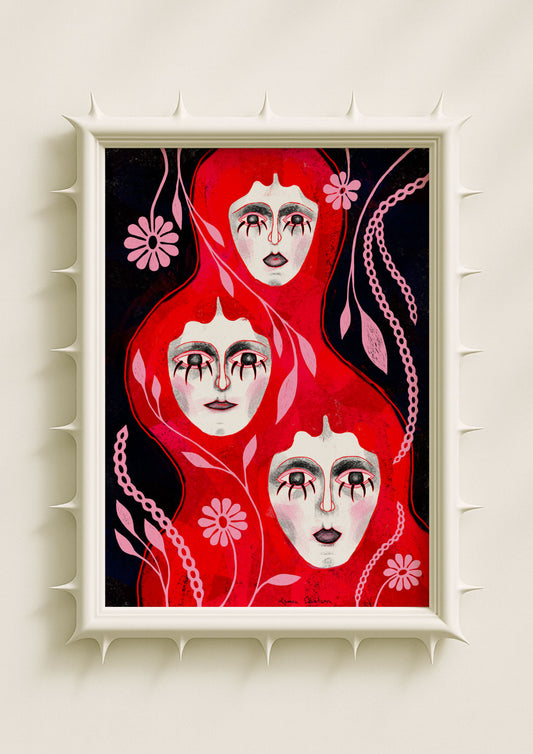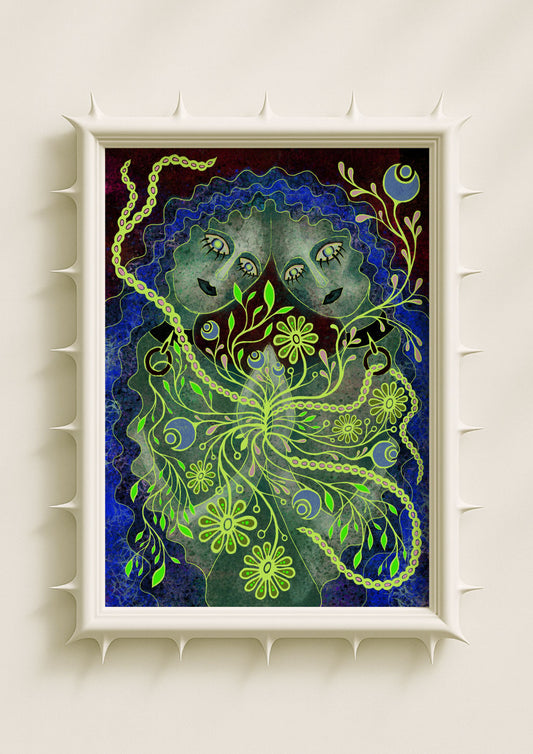The Face as a Structure of Feeling
In modern portrait posters, the face is no longer only representation — it becomes a form of emotional architecture. When I compose a woman’s face, I think less about accuracy and more about the emotional geometry behind each feature. The placement of the eyes, the distance between elements, the softness or tension of the proportions all contribute to an atmosphere rather than a likeness. The result is a face that doesn’t just look back at the viewer but communicates through shape, rhythm and quiet distortions.

Eyes as Anchors of Inner Movement
The eyes are often the first point where emotional geometry begins. Their position can create openness, distance or a sense of internal retreat. When I place them slightly higher or farther apart than realism might allow, I’m shaping a particular emotional tone. Wide-set eyes can evoke spaciousness, introspection or a dreamlike state. Eyes placed close together create intimacy and quiet intensity. By softening their edges, elongating their shape or letting the gaze drift, their emotional message becomes clearer. The eyes become anchors of the inner landscape rather than anatomical precision.
Exaggeration as Emotional Emphasis
In many of my portraits, certain features stretch beyond typical proportion. A long neck, an elongated jawline, or an expanded cheek plane can all shift how the viewer perceives the mood of the figure. These exaggerations are not stylization for its own sake — they are tools that draw out the emotional structure of the face. A lengthened profile can suggest fragility or openness. A widened forehead can express contemplation. An intentionally uneven contour can introduce vulnerability. Through these slight distortions, the face becomes a map of feeling rather than a static likeness.

The Minimal Mouth and the Space Around It
The mouth holds a unique place in emotional geometry. Often, my portraits feature a reduced or softened mouth — not erased, but quiet. A minimal mouth leaves more silence in the composition. It invites interpretation rather than declaring expression. By giving more space to the lower half of the face, the artwork creates a sense of suspended emotion. A small mouth surrounded by softened gradients can suggest restraint, longing, or internal processing. This minimalism directs attention to the emotional tension that exists between stillness and possibility.
Balancing Symmetry with Human Tension
Faces naturally hold small asymmetries, and in my posters these are sometimes amplified or used deliberately. A slightly higher brow, a softened cheekbone or an uneven eyelid introduces a kind of lived tension. Symmetry creates order; asymmetry creates feeling. In the emotional geometry of a face, both are necessary. The careful imbalance in the features brings the viewer into a more intimate encounter with the portrait, reflecting the way emotions rarely settle into perfect alignment.

Placement as Emotional Architecture
The overall structure of the face — where it sits on the page, how much negative space surrounds it, how the head tilts — becomes part of the emotional message. A face positioned high on the canvas feels distant or contemplative. A face placed low feels grounded or vulnerable. A slight tilt can create an atmosphere of hesitation or openness. The geometry extends beyond the features to shape how the entire figure relates to the viewer. The composition becomes a form of emotional architecture that holds the portrait together.
The Quiet Impact of Controlled Structure
What gives emotional geometry its power is the way it works without drawing attention to itself. The viewer may not consciously note the shifted distance between the eyes or the softened mouth, but they feel the effect. These structural decisions create mood before meaning, feeling before interpretation. They guide the emotional experience of the artwork in a subtle, architectural way.
A Face Built from Sensation
In modern portrait posters, a woman’s face becomes a structure built from sensation — shaped by choices that reveal emotional presence rather than perfect resemblance. Through placement, proportion and the careful shaping of silence around the features, the portrait becomes an interior space. It holds emotion the way a room holds light. This quiet architecture allows the viewer to enter the portrait not just visually, but emotionally, meeting the figure in a space designed for depth and reflection.
